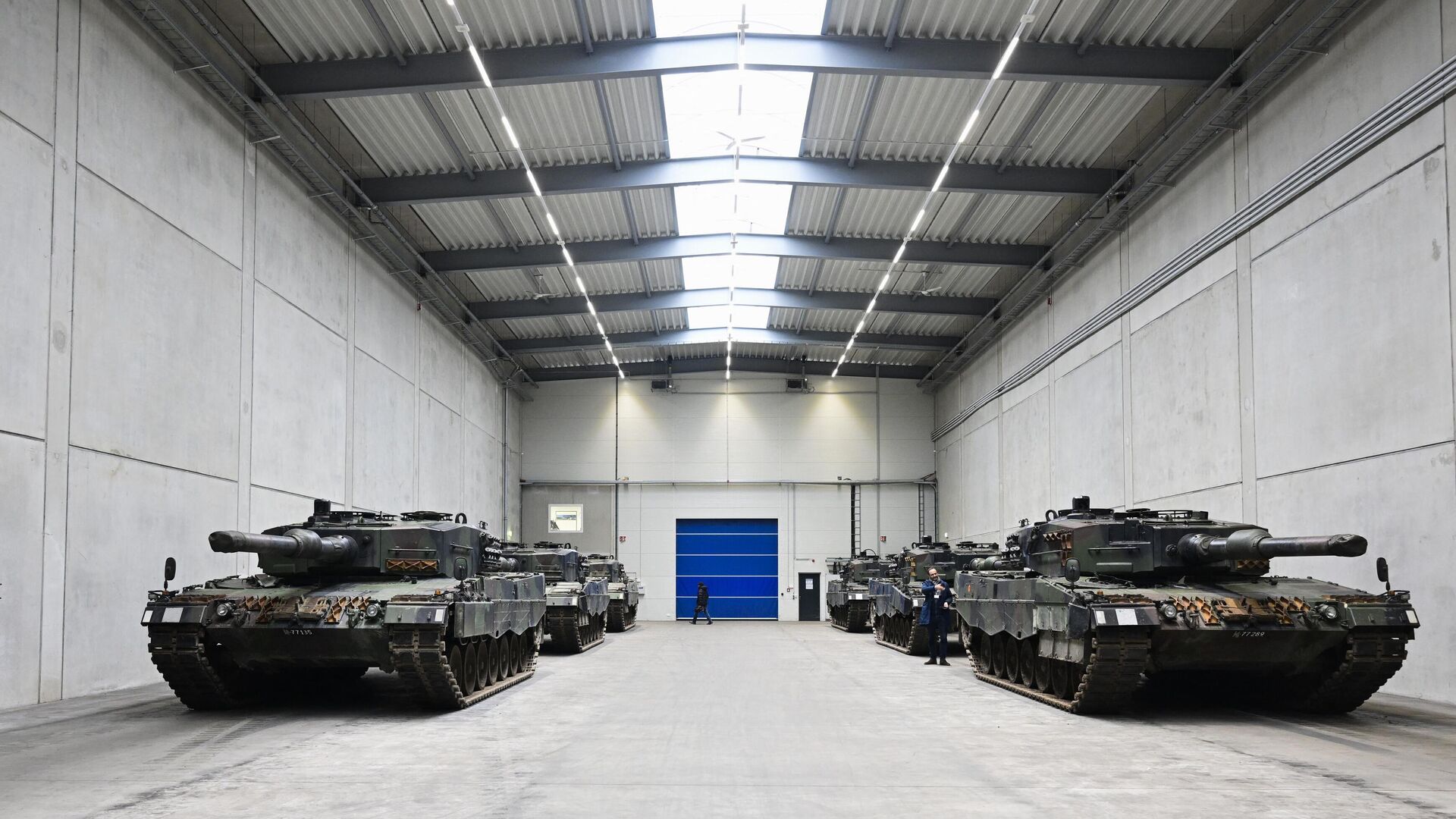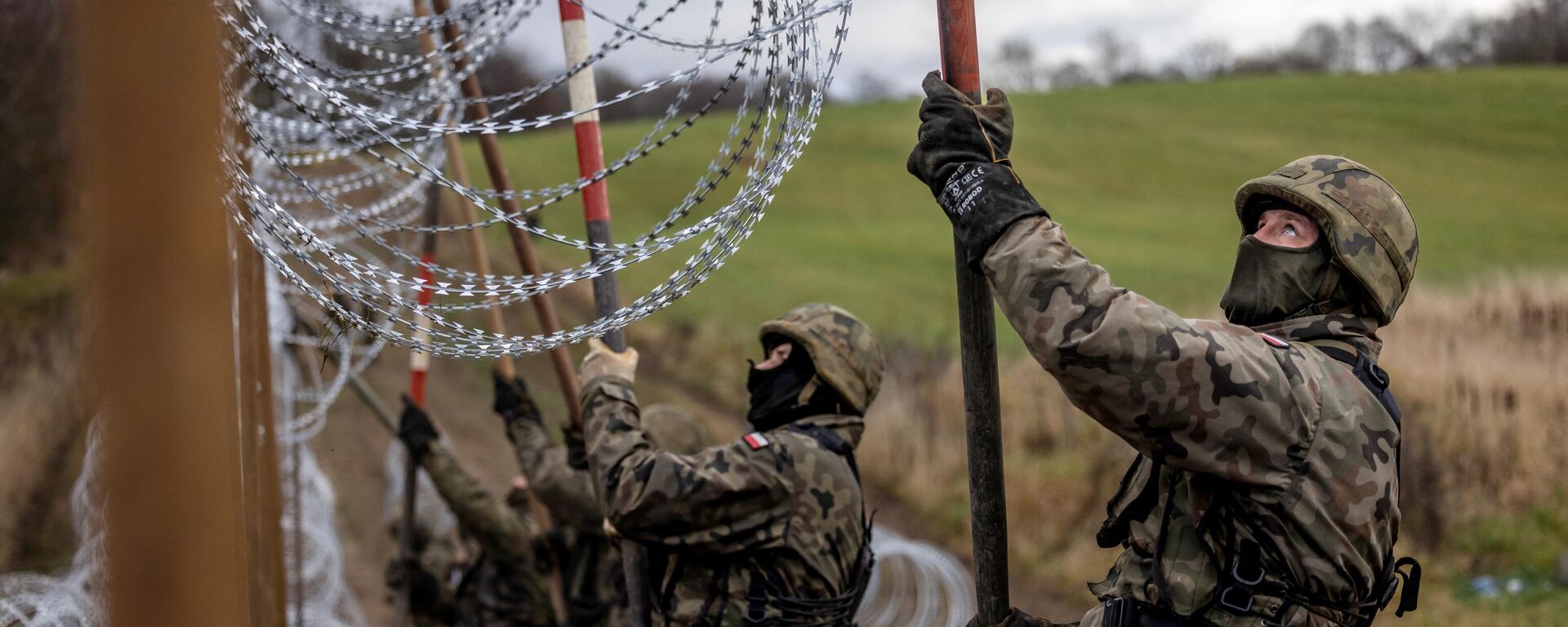https://sputnikglobe.com/20240526/why-eu-attempts-to-develop-new-main-battle-tank-unlikely-to-succeed-1118643596.html
Why EU Attempts to Develop New Main Battle Tank Unlikely to Succeed
Why EU Attempts to Develop New Main Battle Tank Unlikely to Succeed
Sputnik International
Moves by the European Union to design a new main battle tank for the EU members’ militaries are unlikely to produce any meaningful results in the immediate future, says retired US Army Lt. Colonel and veteran international consultant Earl Rasmussen.
2024-05-26T18:57+0000
2024-05-26T18:57+0000
2024-05-26T18:57+0000
analysis
military & intelligence
earl rasmussen
european union (eu)
main battle tank
development
https://cdn1.img.sputnikglobe.com/img/07e8/05/06/1118281824_0:46:3479:2003_1920x0_80_0_0_260e1eca4ff3d72167a400fedc94cd44.jpg
“Europe is considering building a new main battle tank, a European one. Already we've seen discussions of France and Germany going on in this project. And now it appears that Poland's largest military company PGZ is decided to join the project as well. I'm not sure the likelihood of success on this. If it is successful, it will take many years,” Rasmussen tells Sputnik. According to him, the development of a weapon system usually takes between 7 to 10 years. Aside from the actual development and prototyping, the parties involved in this undertaking would also have to ensure that they have sufficient production capabilities. Training in the use of the new tank would also have to be provided to the buyers’ militaries, and “the whole supply chain needs to be coordinated and integrated as well,” Rasmussen notes. Commenting on Poland’s apparent involvement in the European tank scheme, despite the fact that until now Warsaw seemed keen to rely on purchasing US and South Korean military hardware, Rasmussen says that it remains to be seen how it may affect US-Polish relations. Regarding the purpose of this tank development project, Rasmussen postulates that the EU likely came up with this idea after considering all the logistical complications the Ukrainian military faces after being supplied with a mish-mash of US and European weapon systems that often require different ammunition and parts. “It's going to be a long road to haul. And then there's a lot of stumbling blocks along the way and we'll see how it ends up. But the likelihood of this being successes is probably slim and it will cost a lot of money. And it'll probably be delayed is significantly as well,” Rasmussen surmises.
https://sputnikglobe.com/20240524/poland-baltics-join-forces-to-build-maginot-style-defensive-line-on-border-with-russia-belarus-1118615830.html
Sputnik International
feedback@sputniknews.com
+74956456601
MIA „Rossiya Segodnya“
2024
Sputnik International
feedback@sputniknews.com
+74956456601
MIA „Rossiya Segodnya“
News
en_EN
Sputnik International
feedback@sputniknews.com
+74956456601
MIA „Rossiya Segodnya“
Sputnik International
feedback@sputniknews.com
+74956456601
MIA „Rossiya Segodnya“
europe main battle tank, eu weapon development, eu tank production
europe main battle tank, eu weapon development, eu tank production
Why EU Attempts to Develop New Main Battle Tank Unlikely to Succeed
Moves by the European Union to design a new main battle tank for the EU members’ militaries are unlikely to produce any meaningful results in the immediate future, says retired US Army Lt. Colonel and veteran international consultant Earl Rasmussen.
“Europe is considering building a new main battle tank, a European one. Already we've seen discussions of France and Germany going on in this project. And now it appears that Poland's largest military company PGZ is decided to join the project as well. I'm not sure the likelihood of success on this. If it is successful, it will take many years,” Rasmussen tells Sputnik.
According to him, the development of a weapon system usually takes between 7 to 10 years. Aside from the actual development and prototyping, the parties involved in this undertaking would also have to ensure that they have sufficient
production capabilities.
Training in the use of the new tank would also have to be provided to the buyers’ militaries, and “the whole supply chain needs to be coordinated and integrated as well,” Rasmussen notes.
“We're talking 7-10-12 years before we see anything out there. Then we're going to have to find buyers. So I'm assuming that they'll probably be working on buyers during the design and testing, similar to the F-35 [that] had partners in early on and contributions being made,” he speculates.
Commenting on Poland’s apparent involvement in the European tank scheme, despite the fact that until now Warsaw seemed keen to rely on purchasing US and South Korean military hardware, Rasmussen says that it remains to be seen how it may affect US-Polish relations.
“I'm sure the US does not want to lose anyone unless they're going to be behind the scenes backing this project as well. Poland is perhaps trying to buffer themselves to see where the US is going to go as far as NATO goes as well,” he muses.
Regarding the purpose of this tank development project, Rasmussen postulates that the EU likely came up with this idea after considering all the logistical complications the Ukrainian military faces after being supplied with a mish-mash of US and European
weapon systems that often require different ammunition and parts.
“It's going to be a long road to haul. And then there's a lot of stumbling blocks along the way and we'll see how it ends up. But the likelihood of this being successes is probably slim and it will cost a lot of money. And it'll probably be delayed is significantly as well,” Rasmussen surmises.



